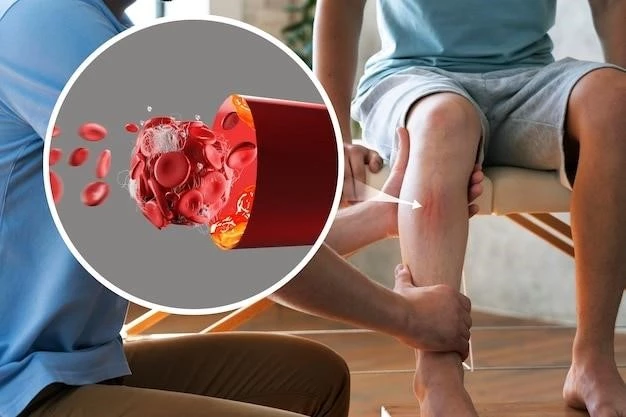Introduction to Stuccokeratosis
Stuccokeratosis presents as benign skin growths‚ often white or gray‚ and resembling warts or lesions․ Typically appearing on lower extremities‚ these growths are more common in men․ Stuccokeratosis is considered a variant of seborrheic keratosis‚ possibly resulting from thickening of the epidermis․
Description and Characteristics
Stuccokeratosis is a benign skin condition characterized by tiny‚ white or gray wart-like growths or lesions‚ typically appearing on the lower extremities․ More common in men‚ these growths resemble old stucco on houses․ Patients rarely experience symptoms with stuccokeratosis‚ which are often asymptomatic and may go unnoticed․ Histologically‚ it involves thickening of the epidermis‚ particularly the stratum corneum‚ giving the lesions a church spire pattern․ Typically multiple lesions are found‚ and they may vary in color from gray‚ white‚ pink‚ to yellow․ The lesions have a stuck-on appearance‚ with a riddled skin texture‚ and may sometimes result in minimal bleeding if scraped․
History of Stuccokeratosis
Stuccokeratosis was first described in 1965 by Kocsard and Ofner‚ with later observations by Willoughby and Soter in 1972․ It is considered a variant of seborrheic keratosis‚ with a prevalence in males and a distinctive appearance akin to old stucco on houses․ The condition is characterized by benign skin growths that typically affect the lower extremities․
Discovery and Naming
Stuccokeratosis‚ also known as keratosis alba‚ was first described in 1965 by Kocsard and Ofner‚ with later observations by Willoughby and Soter in 1972․ The name likely originates from the similarity of the lesions to old stucco on houses․ This skin condition is thought to result from the thickening of the epidermis‚ particularly the stratum corneum‚ giving it a distinct church spire pattern upon histological examination․
Clinical Features of Stuccokeratosis
Stuccokeratosis displays as small‚ white or gray wart-like growths on the lower extremities․ Often asymptomatic‚ these lesions resemble old stucco on houses and have a stuck-on appearance․ More prevalent in men‚ stuccokeratosis may vary in color and texture‚ occasionally causing minimal bleeding if disturbed․ Multiple growths with a riddled skin texture are common․
Symptoms and Appearance
Stuccokeratosis presents as small‚ benign lesion clusters with a stuck-on appearance‚ typically white or gray‚ resembling warts․ These growths are often asymptomatic and commonly found on the lower extremities․ The lesions may vary in color‚ including pink‚ yellow‚ and white‚ and have a riddled skin texture․ In some cases‚ minimal bleeding can occur if the lesions are disturbed․
Epidemiology of Stuccokeratosis
Stuccokeratosis‚ also known as keratosis alba‚ manifests as benign skin lesions predominantly on the lower extremities and occasionally on the arms and hands․ This condition appears more frequently in men than women‚ particularly affecting elderly individuals aged over 45․ These lesions‚ characterized by their white or gray color‚ are common but often asymptomatic‚ requiring no mandatory treatment․
Stuccokeratosis‚ also known as keratosis alba‚ is more prevalent in men than women‚ especially affecting elderly individuals over the age of 45․ The condition commonly manifests as small‚ benign skin lesions‚ predominantly on the lower extremities‚ with occasional occurrences on the arms and hands․ Typically asymptomatic‚ stuccokeratosis does not usually require mandatory treatment․

Diagnosis of Stuccokeratosis
Stuccokeratosis is diagnosed based on the characteristic appearance of small‚ white or gray wart-like growths on the lower extremities․ Physicians may perform a visual examination and consider the patient’s demographics‚ such as age and gender‚ as men are more susceptible․ Biopsy or histological analysis may be conducted to confirm the diagnosis․
Prevalence and Risk Factors
Stuccokeratosis‚ or keratosis alba‚ is more frequent in men‚ particularly affecting those aged over 45․ This benign skin condition commonly presents with small‚ white or gray wart-like growths‚ mostly on the lower extremities․ Men are more likely to develop stuccokeratosis than women‚ with the lesions often appearing asymptomatic and not mandating treatment․
Causes and Pathogenesis of Stuccokeratosis
Stuccokeratosis‚ also known as keratosis alba‚ is characterized by multiple tiny‚ white or gray wart-like growths on the skin‚ particularly on the lower extremities․ While the exact cause is unknown‚ it is considered a variant of seborrheic keratosis‚ likely resulting from the thickening of the epidermis‚ showing histological patterns resembling a church spire․
Underlying Factors
Stuccokeratosis‚ also known as keratosis alba‚ is characterized by multiple tiny‚ white or gray wart-like growths on the skin‚ particularly on the lower extremities․ While the exact cause is unknown‚ it is considered a variant of seborrheic keratosis‚ possibly resulting from the thickening of the epidermis‚ which histologically resembles a church spire․ This skin condition is typically found in elderly men and is mostly asymptomatic․

Treatment Options for Stuccokeratosis
Treatment for stuccokeratosis is often unnecessary due to its benign nature and asymptomatic presentation․ However‚ some medical professionals may opt for removal using methods such as liquid nitrogen therapy․ This involves freezing the lesions‚ with the procedure typically simple and non-invasive․
Medical and Surgical Interventions
Stuccokeratosis‚ a benign skin condition‚ may not always necessitate medical intervention due to its asymptomatic nature․ However‚ in cases where removal is preferred‚ liquid nitrogen therapy can be utilized․ This involves freezing the lesions‚ usually a simple and non-invasive procedure․ Other treatment options may include topical medications like Imiquimod 5 cream and keratolytic compounds․
Outlook and Complications of Stuccokeratosis
Stuccokeratosis‚ commonly affecting elderly men‚ is usually benign and asymptomatic․ While the lesions may not require treatment‚ they can occasionally be removed through methods like liquid nitrogen therapy․ Long-term prognosis is generally favorable‚ with minimal risk of complications associated with this condition․
Potential Risks and Long-term Prognosis
Stuccokeratosis‚ while typically benign and asymptomatic‚ may not require treatment; However‚ liquid nitrogen therapy can be used for removal if desired․ The long-term prognosis is generally positive‚ with minimal risk of complications associated with stuccokeratosis․ The lesions often go unnoticed and may not cause significant issues over time․
